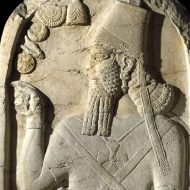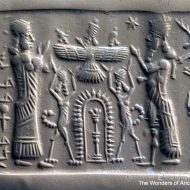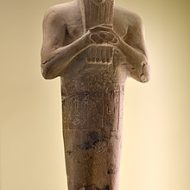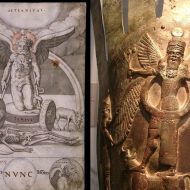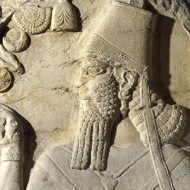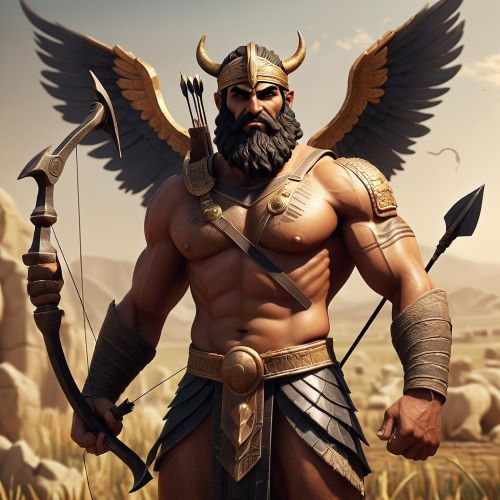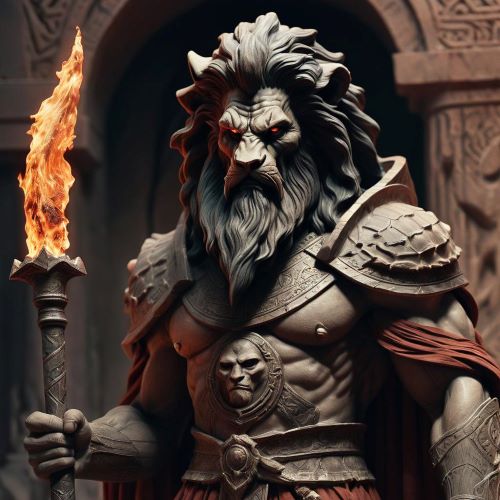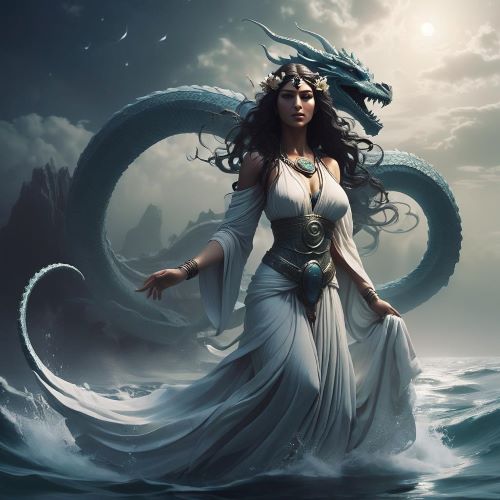An : The Sky God
Listen
At a glance
| Description | |
|---|---|
| Origin | Sumerian Mythology |
| Classification | Gods |
| Family Members | Ki, Antu, Nammu (Wives), Ishkur, Enlil, Enki, Amurru (Sons), Nayana, Nishuku & many others |
| Region | Iraq |
| Associated With | Sky, Creation, Father of the Gods |
An
Introduction
The Sumerian god An is part of the trio of gods, alongside Ea, the sky god of Mesopotamia, and Enlil. Although An was regarded as the highest god in the universe, he was only a minor deity in the mythology of ancient Mesopotamia. He was also the father of several demons and spirits, including Lamashtu, who would prey on children.
An, who is around 3,000 BC older than the other humans, was a creature from the Sumerian culture’s first phase. He was initially regarded as a massive bull. He lived in Uruk, which is a city located in the southern region of the country. The depiction of cows suggests that An was a part of the herders’ pantheon. In Akkadian mythology, Antum, the consort of Anu, is often mistakenly referred to as Ishtar.
Physical Traits
There are no known anthropomorphic depictions of An or his physical form. Instead, his symbol is a horn crown, which is sometimes depicted as a throne and his animal is a bull. An image of the god is usually depicted on a throne, which signifies his status as the king of the Gods. He is often depicted as a king who has granted honour and responsibility to various individuals, such as Assur, Marduk, and Enlil.
Family
The earliest writings of the ancient world did not refer to the god’s origins. However, later writings refer to him as the son of Kisar and Ansar. In the 3rd millennium BC, the goddess Uras was depicted as his consort. Later, in Akkadian and Sumerian writings, the goddess Ki was depicted as the wife.
The term “father of the gods” is often associated with An, and many deities are regarded as his children. In inscriptions from the third millennium BC, it is written that An was the father of several deities, such as Gatumdug, Baba, and Ningirsu. Later literary works refer to him as the father to gods such as Enki/Ea, Adad, Girra, Nanna/Sin, Nergal, and Sara. Goddesses, who are referred to as his daughters, include Ninisinna, Nidaba, Ninkarrak, Ninnibru, Nungal, and Nusku.
He is also known as the creator of the multiple demons known as the Sebettu, Asag, and Lamatu. In the epic Erra and Isum, he gives the serpent to Erra as a weapon to kill humans whenever their noise gets too loud. When Enlil became more powerful, the functions of An and Enlil became more similar. In Seleucid Uruk, the god was sometimes compared with Amurru and Dumuzi.
Other names
In the Sumerian language, the word “An” can be translated as “high one.” It eventually became associated with the god, similar to how “El” was used in the semitic languages. In Sumerian cosmogony, An is depicted as a dome that covers the flat earth. On the outside of this dome is a body of salt water, which is referred to as “Tiamat.”
In the Sumerian language, the word “An” was used alongside “the heavens” to make it uncertain if the two were referring to the same deity. During the old Babylonian era, which ended with Hammurabi’s death, Anu was regarded as both the god of the universe and the chief god.
Powers and Abilities
In a text from the 71st year of the Seleucid era, which dates back to approximately 215 BCE, it is stated that An is responsible for the entire earth firmament. Also, two circumpolar stars were referred to as the Great An and Antu of Heaven. These are typically grouped together with the other major heavenly bodies that were seen by Mesopotamian astronomers during the first millennium BCE. These include the moon, Jupiter, Venus, Mercury, and Saturn.
Although he is not often depicted in popular mythology, Anu is often regarded as a background figure, as he became more remote as the god’s veneration grew. At first, he was regarded as a sky god, and he eventually became the ruler of the heavens. Together with Enki and Enlil, he formed a triad that ruled the heavens, the underworld, and the earth. He was also regarded as one of the most ancient deities of the Seven Divine Powers, alongside Enki, Utu-Shamash, Inanna, Ninhursag, and Nanna.
He is often considered to be an important part of a myth, even though it might not seem like a major character. Some of the most popular myths from Mesopotamian history include Enkidu, The Epic Of Gilgamesh and The Enuma Elish,
Modern Day Influence
Many of the Mesopotamian gods who were associated with the Assyrian Empire were left after the fall of the empire in 612 BCE. During this time, the Assyrians adopted various characteristics of gods from other religions. The people who felt that they were victims of the Assyrian rule expressed their anger and vengeance by destroying their temples and cities.
Even though some deities were not widely acknowledged, such as An, some were still worshipped. During the Hellenistic period of ancient Mesopotamia, he was associated with Marduk and continued to be worshipped up to around 140 BCE, during the time when Parthians took over the region and the region moved to Zoroastrianism.
Related Images
Frequently Asked Questions
What is lorem Ipsum?
I am text block. Click edit button to change this text. Lorem ipsum dolor sit amet, consectetur adipiscing elit. Ut elit tellus, luctus nec ullamcorper mattis, pulvinar dapibus leo.
What is lorem Ipsum?
I am text block. Click edit button to change this text. Lorem ipsum dolor sit amet, consectetur adipiscing elit. Ut elit tellus, luctus nec ullamcorper mattis, pulvinar dapibus leo.
What is lorem Ipsum?
I am text block. Click edit button to change this text. Lorem ipsum dolor sit amet, consectetur adipiscing elit. Ut elit tellus, luctus nec ullamcorper mattis, pulvinar dapibus leo.
What is lorem Ipsum?
I am text block. Click edit button to change this text. Lorem ipsum dolor sit amet, consectetur adipiscing elit. Ut elit tellus, luctus nec ullamcorper mattis, pulvinar dapibus leo.
What is lorem Ipsum?
I am text block. Click edit button to change this text. Lorem ipsum dolor sit amet, consectetur adipiscing elit. Ut elit tellus, luctus nec ullamcorper mattis, pulvinar dapibus leo.

